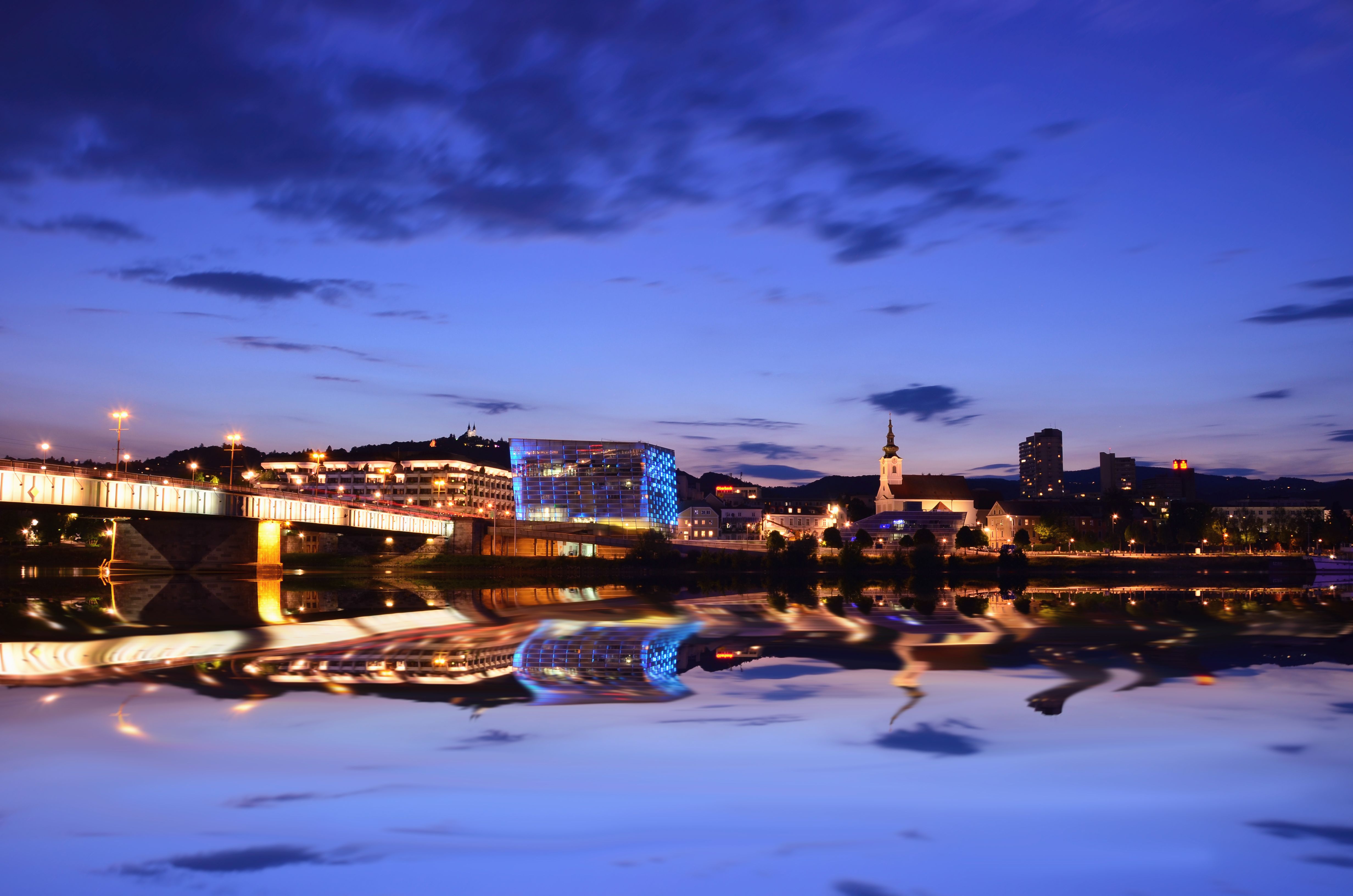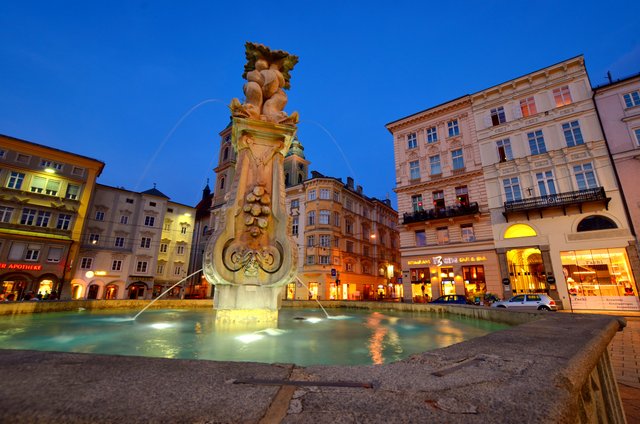Blue hour Photography
The blue hour is called the time between sunset and the complete dark of the night or the dark of the night and the sunrise. It is also called twillight. You can encounter the blue hour twice every day. If you do longtime exposure photography the sky will apear blue, that's where the name of the blue hour comes from. A lot of photographers like the blue hour because the light effects you can obtain in this special time of the day are very interesting. Buildings and other structures wich arte englightened by artificial light look very impressive during the blue hour.

Linz Urfahr at the blue hour. Picture: Florian Glechner
Longtime Exposure of Linz Urfahr in the blue hour short after sunset. A slightely violet color from the sunset is still visible. This is only possible if your photo direction is against the sunset.
Filters for better pictures
Beacause Exposure times in the blue hour are still around 1 Second it is preferable to use filters to smooth flowing water or to smooth the clouds in the sky. If you take your picture against the sunset position you can also obtain an interesting red and violet color in the sky. You can either use neutral density filters (ND) or also take pictures without filters in the blue hour. Depending on the exposure Time you need of course. Because of the low amount of available light you will need a tripod to obtain reasonable results without blur.
I prefer taking a filter with 10 or 5 stops to prolong the exposure time, the later in the evening or the less light available the smaller the filter I use. In Austria the blue hour is much longer in summer, about 50 minutes than in winter about 30 minutes. So summer is likeable to do pictures in the blue hour. The closer you are to the north or southpole of the earth the longer the blue hour takes (Northpole = longer blue hour in summer, Southpole = longer blue hour in winter). The blue hour there could take up to 2 Weeks.

Main Place in Linz in the blue hour. Picture: Florian Glechner
Use a tripod
Because the available light is very limited you need to do a longtime exposure of the Scene. A tripod or a solid place where you can put your camera is very necessary.
How to setup your Camera
Because your camera is mounted on a tripod you don’t need an image stabilizer to create you picture. So turn it off, otherwise it could happen that your image is blurry because of jitters. Depending on your lens you should set an Aperture between f8.0 and f13. So the Background of you pictures appears very sharp and you still have a reasonable exposure time. You will need a exposure time of about 1 to 2 seconds depending on the available light. You can prolong this exposure time with a ND-Filter. This could be helpful if you want to “delete” people and other moving objects from the Scene. If you use a single lens reflex Camera (SLR) you should also use a mirror lockup to not blur your picture because of shock.
Because there is only very little light available it is possible that you camera doesn’t find any focus point in the scene, that’s why it is better to do manually focusing in this time.
Best application area
You can take pictures of different situation in the blue hour, but in my opinion the best subjects in the pictures of this time of the day are lighted buildings and architecture. These look very beautiful in a blue hour picture. Artificial light with the different light temperature to the available light from the sun looks very interesting and creates a nice style of the picture itself.
So pictures in the blue hour are very interesting when there is some artificial light in it. This light can come from Streetlights or from the lighting of an building. I also like longtime Exposure from Traffic very much in this time. The Lighttrails are very impressive when you freeze them in your picture.
Longtime Exposure of the Colloseum Rome in the blue hour. Picture: Florian Glechner
Why there is the blue hour
The blue color of the Sky has a different color temperature in the blue hour and after sunset then during the day. This is because the sunrays that enter the ozone are reflected in a different angle than during the day. Depending on the angle of the sunrays that enter the athmosphere the light conditions change for several times all over the day.
If you like my posts please upvote and follow for more things to come. If you think this is interesting for a friend of you please show him but please respect my copyright.
Hi, florian-glechner! I just resteemed your post!
I am a new, simple to use and cheap resteeming bot.
If you want to know more about me, read my introduction post.
Good Luck!
@OriginalWorks